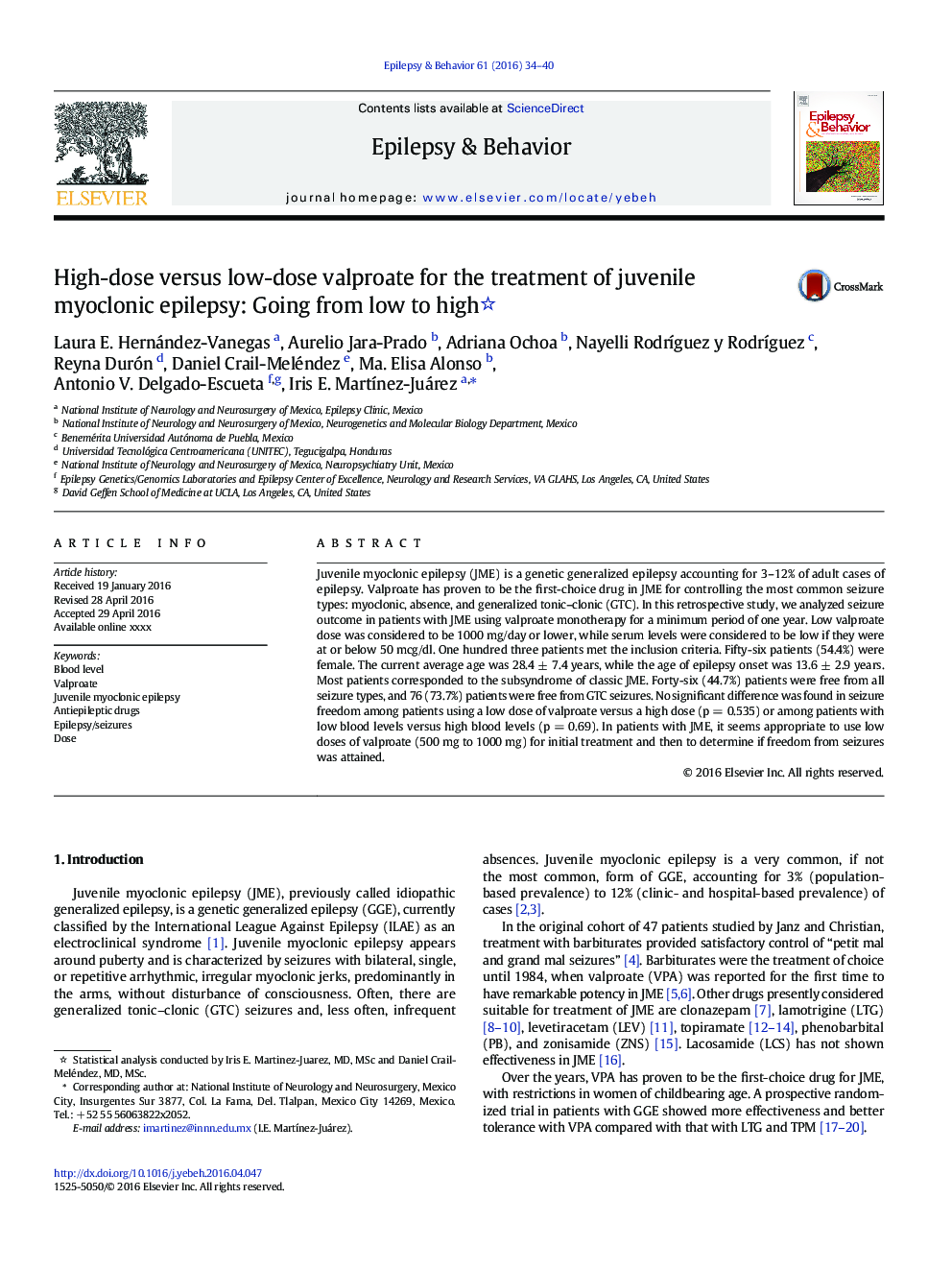| Article ID | Journal | Published Year | Pages | File Type |
|---|---|---|---|---|
| 6009964 | Epilepsy & Behavior | 2016 | 7 Pages |
Abstract
Juvenile myoclonic epilepsy (JME) is a genetic generalized epilepsy accounting for 3-12% of adult cases of epilepsy. Valproate has proven to be the first-choice drug in JME for controlling the most common seizure types: myoclonic, absence, and generalized tonic-clonic (GTC). In this retrospective study, we analyzed seizure outcome in patients with JME using valproate monotherapy for a minimum period of one year. Low valproate dose was considered to be 1000 mg/day or lower, while serum levels were considered to be low if they were at or below 50 mcg/dl. One hundred three patients met the inclusion criteria. Fifty-six patients (54.4%) were female. The current average age was 28.4 ± 7.4 years, while the age of epilepsy onset was 13.6 ± 2.9 years. Most patients corresponded to the subsyndrome of classic JME. Forty-six (44.7%) patients were free from all seizure types, and 76 (73.7%) patients were free from GTC seizures. No significant difference was found in seizure freedom among patients using a low dose of valproate versus a high dose (p = 0.535) or among patients with low blood levels versus high blood levels (p = 0.69). In patients with JME, it seems appropriate to use low doses of valproate (500 mg to 1000 mg) for initial treatment and then to determine if freedom from seizures was attained.
Related Topics
Life Sciences
Neuroscience
Behavioral Neuroscience
Authors
Laura E. Hernández-Vanegas, Aurelio Jara-Prado, Adriana Ochoa, Nayelli RodrÃguez y RodrÃguez, Reyna M. Durón, Daniel Crail-Meléndez, Ma. Elisa Alonso, Antonio V. Delgado-Escueta, Iris E. MartÃnez-Juárez,
